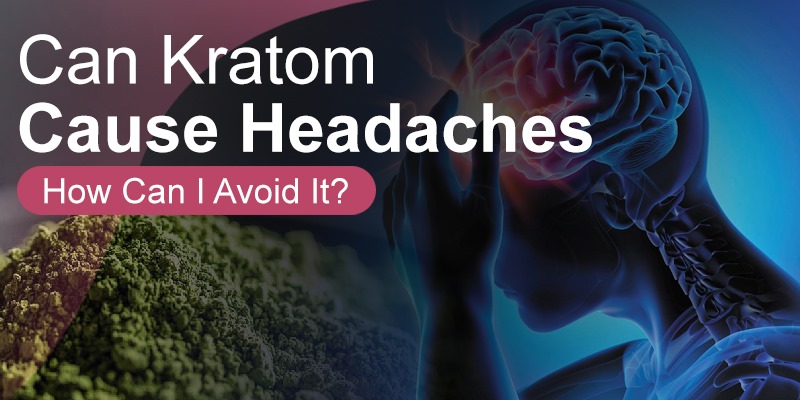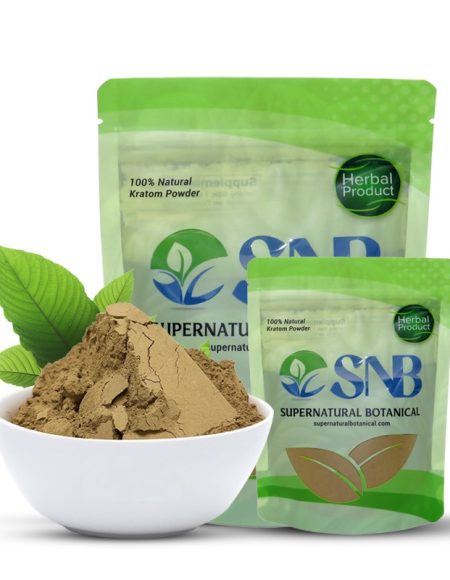With the sudden surge in Kratom usage in the US, there have been talks around the town about its potential side effects also. Although most of the users don’t feel any adverse reaction after this botanical usage, it comes with its own set of side effects like nausea, vomiting, headache, and whatnot in a small percentage of the consumers.
As Kratom is often associated with headaches, this article will discuss the link between the two, possible reasons for headaches related to Mitragyna usage, and suggest ways to avoid them.
Table of Contents
Does Kratom Cause Headaches?
Even though Kratom is generally considered safe, it can result in adverse effects such as headaches in some people. Several studies have investigated the possible connection between Kratom use and headaches.
According to one study published in the International Journal of Legal Medicine, the plant contains alkaloids that may bind to receptors in the brain linked to migraines. These alkaloids, particularly mitragynine, and 7-hydroxymitragynine, may constrict blood vessels in the brain, leading to headaches in some individuals.
Another study published in the Journal of Psychoactive Drugs discovered that Mitragynine usage was associated with sleep problems in some individuals. The research also revealed that users who experienced sleep problems and the severity of discomfort were more likely to have taken high doses of the herb for an extended period.


Understanding the Causes of Kratom-Induced Headaches
There are various reasons associated with Kratom that can result in headaches and associated symptoms. These factors can be described as follows:
Amount of Dosage in Kratom Use
The amount of dosage ingested is a crucial factor in determining whether an individual will encounter a headache or not. Higher doses can lead to more intense side effects, such as nausea, constipation, and headache.
The correct dose differs based on the person, the type of strain consumed, and the purpose of usage. It is crucial to commence with a low dosage and gradually raise it if necessary. This technique can prevent individuals from taking excessive Kratom simultaneously, amplifying the likelihood of adverse reactions.
You can calculate your dosage with this Kratom Dosage Calculator
Total Frequency of Kratom Use
Frequent or daily use of the botanical can contribute to headaches. People who use Kratom regularly have a higher chance of experiencing a headache.
To prevent excessive usage and potential adverse effects, it is crucial to utilize the herb responsibly and take breaks from its consumption.
Quality of the Kratom Product
The caliber of Kratom merchandise can be significant as inferior quality ones may contain pollutants like bacteria or heavy metals, which may lead to health complications, including headaches.
Therefore, always ensure to obtain Kratom products only from trustworthy sources that frequently conduct third-party lab tests to ensure the purity and excellence of their products.
Individual Sensitivity in Response to Kratom
Ultimately, headaches could result from an individual’s sensitivity to Kratom particularly those who may be more responsive to the alkaloids present in the product.
It is advisable to begin with a minimal Kratom dose and observe any likely adverse reactions, such as headaches, before increasing the dosage.
The Impact on the Neurotransmitters
Kratom can potentially impact the neurotransmitters in your body, predominantly dopamine and epinephrine, also called adrenaline.
These neurotransmitters, mainly epinephrine, stimulate the body and mind and can cause a considerable surge in blood pressure, leading to severe headaches. Green and white Kratom strains are more stimulating, thus, more likely to produce such headaches than other Kratom varieties.
Less Water Intake
Headaches after using kratom could be due to low water intake, which causes dehydration. Kratom has qualities that make it easy to cause dehydration quickly. The first of these is its ability to create a dry sensation when it comes into contact with moist tissue, like the inside of your mouth.
It happens because it tightens the tissue structure, preventing moisture from escaping or entering, which can result in feelings of dryness and dehydration.
Additionally, the herb can also cause increased urination and can lead to dehydration if you don’t drink enough fluids. Therefore, it’s crucial to drink plenty of water when using Speciosa to avoid dehydration and related symptoms, such as headaches. Dehydration is a common issue among kratom users, and many side effects associated with the herb may be due to dehydration.
Changes in Hormonal Levels
Taking Mitragyna for an extended period can impact one’s hormone levels. Specifically, users report that Kratom tends to lower testosterone levels.
However, this isn’t proved yet, and research continues. It’s important to maintain a proper balance of hormones throughout our lives, except during certain age periods when levels can naturally fluctuate. When hormones become imbalanced, it can result in various symptoms, including headaches.
Caffeine Sensitivity in Response to Kratom
Those who experience headaches from consuming caffeinated beverages like coffee or tea are likely to experience similar headaches from consuming Kratom. Caffeine is known to constrict blood vessels around the brain, resulting in increased blood flow when caffeine is stopped, leading to headaches due to changes in brain processes.
Although the herb lacks caffeine, its two primary alkaloids, mitragynine and 7-hydroxy mitragynine can also cause vasoconstriction by stimulating α-adrenergic receptors that regulate blood pressure. These blood flow changes and chemical alterations can cause headaches.
Low Guard Towards Migraines
It is estimated that over a billion people worldwide suffer from migraine headaches, yet the cause of these headaches remains a mystery. While vasoconstriction was previously thought to be the main culprit, recent discoveries have revealed that genetic factors also play a significant role.
In addition, the interaction between hormones and neurotransmitters like serotonin may contribute to the development of migraines. Individuals with migraines may experience headaches after taking Kratom due to its effects on serotonin or brain electrical activity. Still, the herb or its alkaloids are not considered the direct cause of headaches.
Tips for Avoiding Kratom-Related Headaches
To prevent headaches associated with Mitragyna usage, it is crucial to adhere to straightforward suggestions that can decrease the probability of encountering this prevalent adverse reaction.
Maintain a Healthy Diet and Stay Hydrated
The easiest but most important approach to managing Kratom-induced headaches is to drink lots of water. As this botanical is known to cause dehydration, always remaining hydrated can avoid side effects like headaches and migraine.
Normally, 2-3 liters is the adequate amount of water a person should drink daily. However, it is not a perfect guide, as water requirements differ from person to person depending on age, body size, etc.
Furthermore, maintaining a healthy lifestyle that includes proper exercise and workout, regular meals containing all essential nutrients, and good relaxation and sleep time is also extremely important to avoid these headaches.
Use Kratom in Moderation
To avoid the potential side effects of Kratom, it is crucial to consume it moderately and take occasional breaks. Practicing responsible Kratom usage and taking breaks can also minimize the risk of headaches and other side effects associated with it.
Moreover, Initiating Kratom consumption with a low dosage and progressively increasing it can decrease the likelihood of getting a headache. It’s important to be cautious and mindful while using this herbal plant to prevent excessive usage and associated adverse effects.
Choose High-Quality Kratom Products from Reputable Sources
To prevent impurities and negative outcomes, it is crucial to select trustworthy sources and high-quality kratom products. You can identify a reliable source of Kratom botanicals by examining various vendors and evaluating product reviews.
Furthermore, you must read product labels meticulously and adhere to the manufacturer’s or a healthcare provider’s dosage recommendations. This approach will ensure your safety and well-being.
Conclusion – Can Kratom Cause Headaches?
While Kratom is a natural supplement that may provide health benefits, it can cause headaches as a side effect also. Possible causes of Kratom-induced headaches include dehydration, excessive use, low-quality products, and individual sensitivity.
To prevent headaches, users should maintain a healthy diet and hydration, start with a low dosage, use it in moderation, and choose high-quality kratom products from reputable sources. It is also essential to consult with a healthcare provider before using Kratom, especially if you have pre-existing health conditions or are taking other medications. Responsible use of Kratom can minimize the risk of headaches and other potential side effects while providing all the desired health benefits.
Reference:


Heather lives with her husband and two children in beautiful British Columbia. Her passion has always been to enhance the lives of others by helping them reach their own personal goals and accomplishments. Content management is her specialty, and writing is what she does best. Her love for helping others lead her to the cannabis and kratom scene, where she saw an immense gap between patients and medicine that can help them.



















